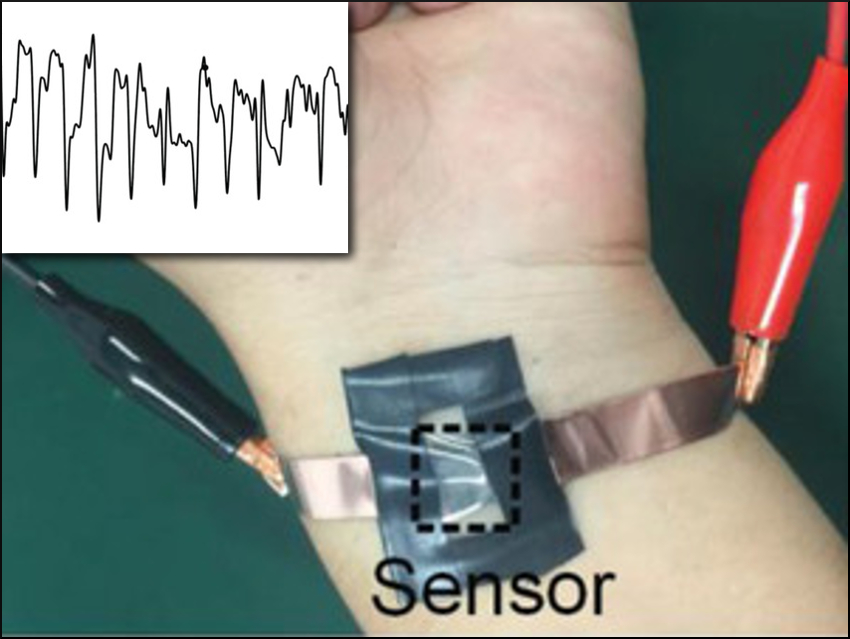Pressure sensors are widely used in many fields, from healthcare to aerospace and civil engineering. Sensors for demanding applications need to be light-weight, have a high sensitivity, and be able to withstand harsh environments.
Weiya Zhou, Sishen Xie, Beijing National Laboratory for Condensed Matter Physics, Beijing Key Laboratory for Advanced Functional Materials and Structure Research, and University of the Chinese Academy of Sciences, all Beijing, China, and Songshan Lake Materials Laboratory, Dongguan, China, and colleagues have developed a pressure sensor that is composed completely of reduced graphene oxide (rGO). The sensors were created by sandwiching a layer of superelastic rGO aerogel between two thin rGO paper layers, which act as electrodes. The aerogel layer was synthesized using wet chemical and annealing methods. The paper layers were created using wet chemical and vacuum filtering methods.
The all-carbon sensor detects pressure using the contact resistance at the aerogel-paper interface. The sensors have a wide detection range from 0.72 Pa to 130 kPa, a low energy consumption of around 0.58 µW, an ultrahigh sensitivity of 349–253 kPa–1, a fast response time of 8 ms, excellent chemical stability, and a low weight. The sensor can be used for the detection of very small pressures such as the human pulse at the wrist (pictured). It can also be used, e.g., to monitor the weights of droplets of water, but also of chemical reagents such as strong acids, strong bases, and organic solvents.
- All-Carbon Pressure Sensors with High Performance and Excellent Chemical Resistance,
Zhuojian Xiao, Weiya Zhou, Nan Zhang, Qiang Zhang, Xiaogang Xia, Xiaogang Gu, Yanchun Wang, Sishen Xie,
Small 2019.
https://doi.org/10.1002/smll.201804779




